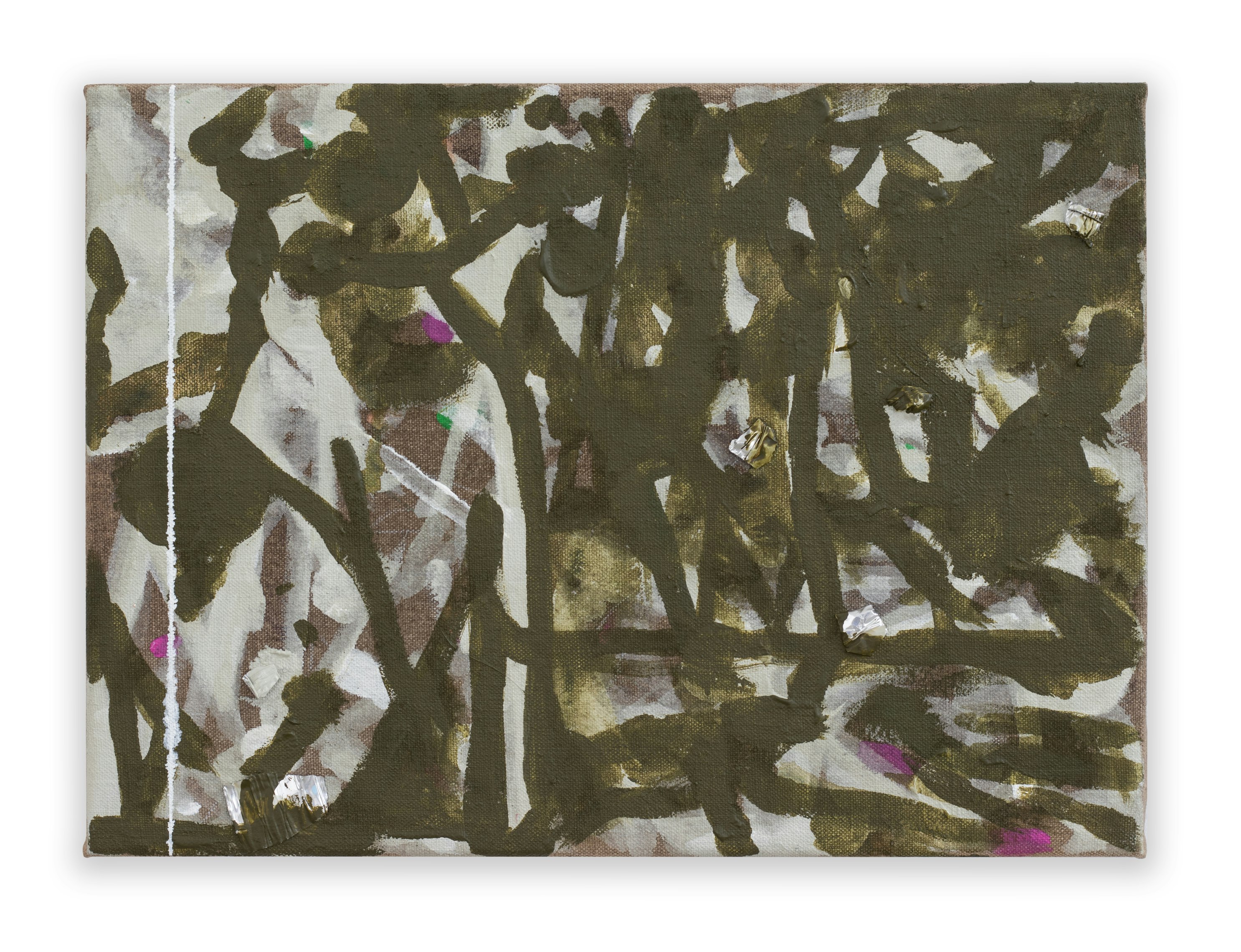
Fugal Ruin XVII (Banyolas), 2021, acrylic, colour pencil and aluminium foil on linen, 24 x 33 cm.
Sometime in the mid 1980s in Eastern Spain I walked along a dirt road in the evening. The
road ran between a newly developed housing complex, where my mother lived, and the sea.
It was about three miles long. Once you left the unfinished streets and villas of the complex
with their small compounds of concrete and patches of tarmac, you hit the dirt track that ran
through the middle of some lemon groves. It was dark except for a few distant lights from the
sparsely populated housing complex that was still under construction, and a few street lights
that were positioned along the track. Several of these lights were not working or else
flickered intermittently. In the evenings I would walk this track down to the sea. I remember
the scent of the lemons and the sound of the insects, the density of the air that was thick
with warmth and my skin alert to the faint breeze. Mostly though I remember the moths
around the street lamps and the heaviness of those glowing points in the dark that were
occupied by hundreds of insects. I remember their erratic movements, the flitting and
fluttering, the sudden rising and falling and the feeling that the lamp itself was alive, pulsing
in and out like a body breathing. There was something unnerving about all this motion in the
surrounding quiet and stillness, about these insects drawn to their electric deaths, but it also
had a mesmerising beauty.
I hadn’t thought about this experience for many years. It was never repeated because the housing complex spread, more roads were built and more street lights installed, more people came and the lemon groves disappeared.
In the middle of the pandemic, I was driving down a country lane in Wiltshire in the early hours of the morning. It was one of those narrow lanes where the hedgerows are as high as walls, where there’s no room for anything else to pass on either side. It was a warm mid- summer’s night and it was pitch black except for my car headlights which lit the way straight ahead. I drove very slowly, feeling nervous about navigating this unfamiliar place. There were clouds of small white shapes drifting in front of me. At first, I thought it was blossom or pollen but then quickly understood that the air was saturated with moths and other insects that were flying out from the dense hedgerows, all drawn by the beam of my headlights. For a moment I stopped. It wasn’t possible to go on.
This… this… is how I imagine radiance. This is how I imagine all manner of unknown forces that hum in our world waiting to be seen if only we are able to pay attention.
On first encountering Patrick’s painting Fugal Ruin XVII – Banyolas (2021) I thought of moths and light. It was something about the movement of the green lines over the white ground, their flickering and slightly erratic nature, as though some marks had been retraced over and over only with slight deviations. Something too about the coloured dots and the small foil fragments that seem to both emerge from, and be subsumed by, the painted surface, and then there are those shadows that are like thickets. Gradually, there was a sharpening of memory. I was back on that dirt road in the summer heat with the smell of lemons and the sea’s faint breeze and I was in my car watching the moths dance between the hedgerows. This is the shock of duration experienced not as clock time but as pattern, as refrain. We are where we are, where we have been, and will become where we will be. Perhaps the only continuity is the one that is felt between a figure and its ground. And perhaps that’s what painting is or has the capacity to be, through the relation that is formed between paint as surface and its support. In these spaces between the two there is a calling forth of time’s vibration through sensation, a calling forth of the experiences that are nestled in the distillation of light and the dispersion of colour, in the meandering of a line, the fluttering of a fragment and the stillness of a dot.
© Fiona Curran, July 2023